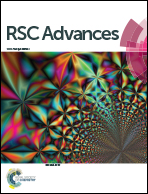Effect of salts formed by neutralization for the enzymatic hydrolysis of cellulose and acetone–butanol–ethanol fermentation
Abstract
Neutralization is essential to maintain the pH for enzymatic hydrolysis of cellulose followed by fermentation of biofuels. This study investigated the effect of salts formed during the neutralization on the enzymatic hydrolysis of cellulosic materials and acetone–butanol–ethanol (ABE) fermentation. The results showed that the formed Ca-citrate salt considerably decreased the glucose release by 26.9% and 26.1% from Avicel and sulfuric acid-pretreated hybrid Pennisetum, respectively, which was probably due to the unproductive adsorption of cellulases by Ca-citrate solids. On the other hand, the formed soluble Na and Ca salts severely inhibited ABE fermentation, thereby decreasing the ABE concentration from 12.8 g L−1 to 0–10.7 g L−1 in different degrees, but no or slight inhibition was observed when the Ca salts formed as precipitates. In particular, Ca-sulfate did not show apparent inhibition of both hydrolysis and fermentation. Therefore, the selection of suitable pretreatment and neutralizing reagents is an alternative way to avoid process inhibition in biofuel production from lignocellulosic materials.



 Please wait while we load your content...
Please wait while we load your content...